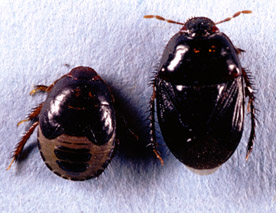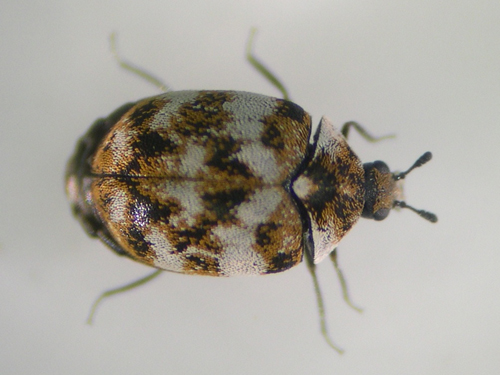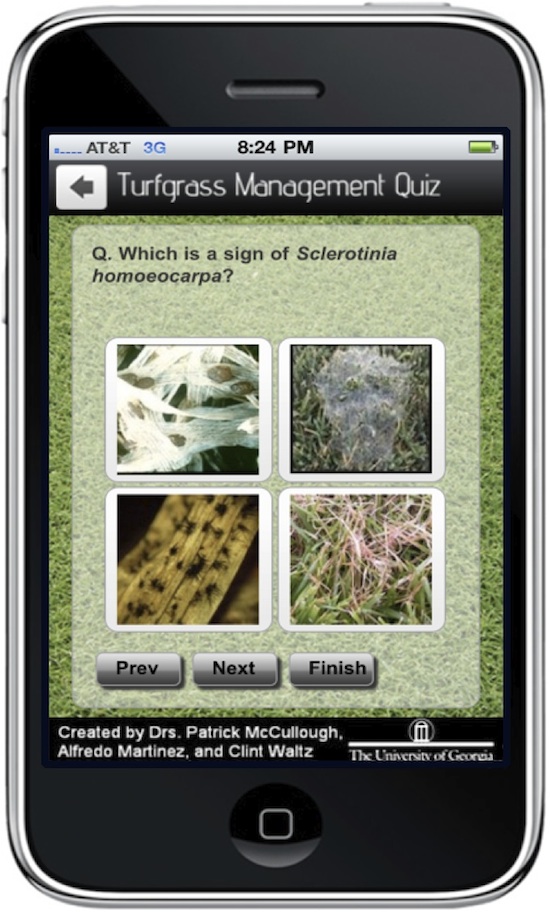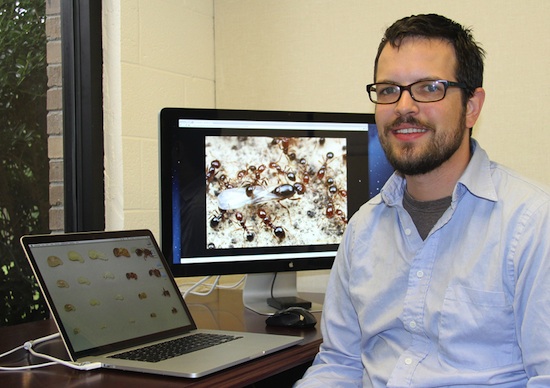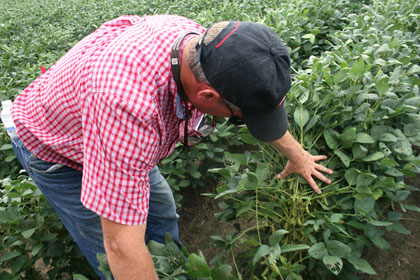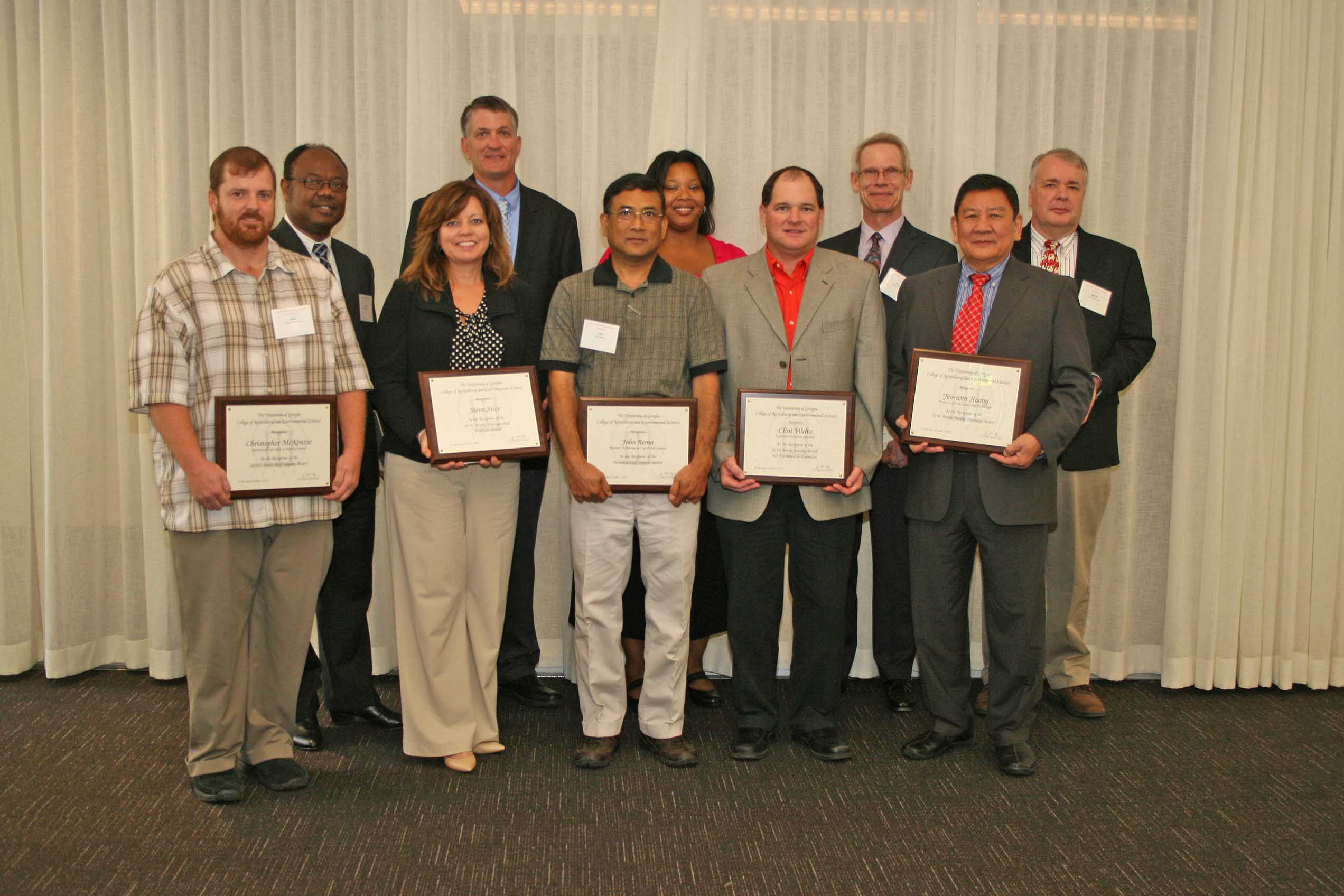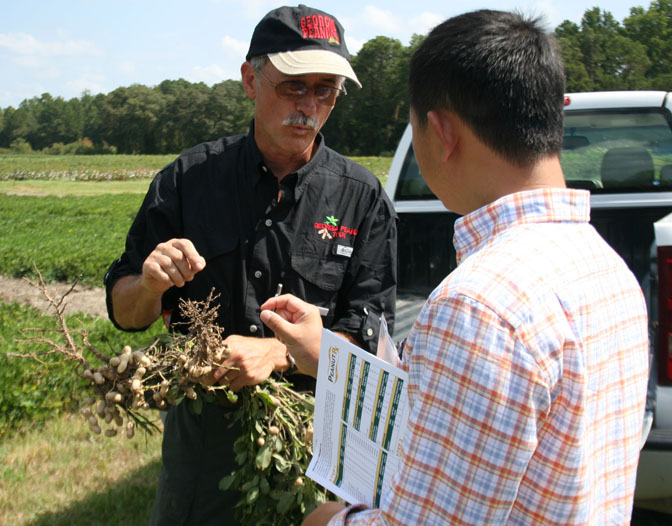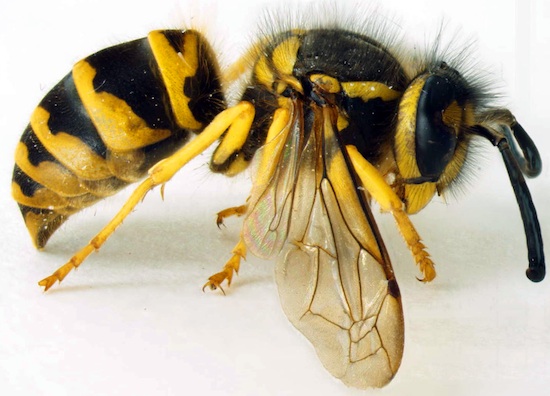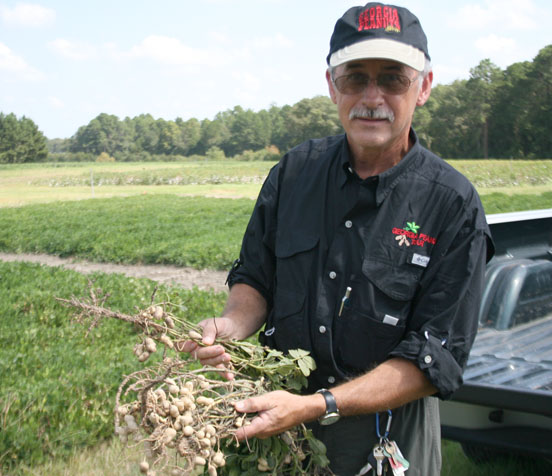 CAES News
CAES News
Nematodes
Tiny microscopic worms called nematodes can have a devastating and costly effect on peanut crops. A new nematode resistant peanut variety, bred by Georgia researchers, will ease this problem by stopping the pest from reproducing. If necessary, University of Georgia experts recommend farmers start using this new variety next season.

